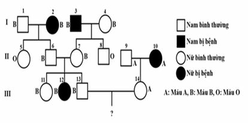Read the following passage and mark the letter A, B, C, or D on your answer sheet to indicate the correct answer to each of the questions.
Butterflies are among the most extensively studied insects – an estimated 90 percent of the world’s species have scientific names. As a consequence, they are perhaps the best group of insects for examining patterns of terrestrial biotic diversity and distribution. Butterflies also have a favorable image with the general public. Hence, they are an excellent group for communicating information on science and conservation issues such as diversity.
Perhaps the aspect of butterfly diversity that has received the most attention over the past century is the striking difference in species richness between tropical and temperate regions.
For example, in 1875 one biologist pointed out the diversity of butterflies in the Amazon when he mentioned that about 700 species were found within an hour’s walk, whereas the total number found on the British islands did not exceed 66, and the whole of Europe supported only 321. This early comparison of tropical and temperate butterfly richness has been well confirmed.
A general theory of diversity would have to predict not only this difference between temperate and tropical zones, but also patterns within each region, and how these patterns very among different animal and plant groups. However, for butterflies, variation of species richness within temperate or tropical regions, rather than between them, is poorly understood. Indeed, comparisons of numbers of species among the Amazon basin, tropical Asia, and Africa are still mostly “personal communication” citations, even for vertebrates. In other words, unlike comparison between temperate and tropical areas, these patterns are still in the documentation phase.
In documenting geographical variation in butterfly diversity, some arbitrary, practical decisions are made. Diversity, number of species, and species richness are used synonymously; little is known about the evenness of butterfly distribution. The New World butterflies make up the preponderance of example because they are the most familiar species. It is hoped that by focusing on them, the errors generated by imperfect and incomplete taxonomy will be minimized.
Which of the following is NOT well understood by biologists?
A. European butterfly habitats
B. Differences in species richness between temperate and tropical regions
C. Differences in species richness within a temperate or a tropical region
D. Comparisons of behavior patterns of butterflies and certain animal groups













